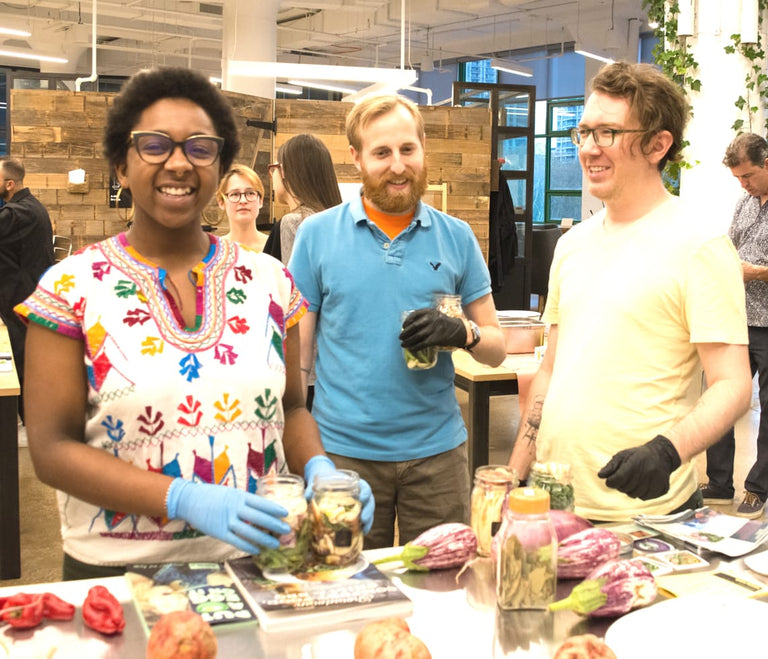What the USDA Is–and Isn’t–Doing to Help Farms During COVID-19
The recent closure of restaurants, schools, and hotels has left large farms across the U.S. with a glut of crops and livestock, and as a result, tens of millions of pounds of fresh food has been destroyed. Meanwhile, small, diversified farms in New York have experienced a surprising boom in sales – a shift that forced them to quickly pivot their operations from wholesale distribution to getting their produce directly to consumers. (This also had a huge impact on small retailers like us in the early months of quarantine!)
In response, the government announced plans to help farmers get back on their feet with multiple aid programs, though most measures have fallen short of this goal. The status of several of these loans have been pending for weeks, despite the fact that relief is time-sensitive and vital to the survival of agricultural businesses impacted by the coronavirus. The following timeline recounts five of the most notable (and controversial) measures the government has taken to aid U.S. farms in the last three months:
1—The Coronavirus Aid, Relief, and Economic Security Act (March 27)
In late March, Congress signed the $2 trillion coronavirus stimulus package into law, which set aside $23.5 billion for agriculture, including $9.5 billion for specialty crops and local producers. An additional $14 billion would replenish the Commodity Credit Corporation (CCC) – an obscure financial institution that grants the Agriculture Secretary Sonny Perdue broad spending powers. Included in the CARES Act was funding for the Small Business Administration (SBA) loans – most notably, the Payment Protection Program (PPP). More on that below.
2—The Paycheck Protection Program (March 27)
Established under the CARES Act, the Paycheck Protection Program (PPP) provides federally guaranteed loans to small businesses to help them keep their employees working. But as NBC reported, ‘A key challenge in the coronavirus aid is that, so far, the amount of money is not near enough to cover losses that have happened to agriculture.’ In fact, just 1.3% of funds went to agriculture-related businesses in the first PPP round, and it is unclear at the moment how much of the second round has been allotted to farms.
Current regulations also require PPP borrowers to spend 60% of loans on worker salaries (initially it was 75%), which is an absurd mandate for local farms with very few employees, especially during the growing season before harvest. Young farmers, farmers of color, and undocumented farmers across the US have been shut out of federal assistance as a result.
3—Unstandardized Formulas for Relief
Collective confusion across the United States has taken hold as government aid has been unspecific and randomized in terms of who qualifies and who does not. Somehow, it comes as no surprise that most funding has gone toward the most profitable commodity farms.
Economists have been disappointed with this lack of standardization given that past trade war programs dealt with similar difficulties. Though the USDA claims its rates have been transparent in both trade wars and formulas for coronavirus relief, allocations have been inequitable across commodities and regions. But standardization is more complex than it might seem. Given that a number of crops have not yet been planted, standardized relief formulas will require time to craft—time that most farmers don’t have to waste.
4—The Coronavirus Food Assistance Program (April 17)
The Coronavirus Food Assistance Program (CFAP) was created to distribute $19 billion funds into the hands of farmers and ranchers as quickly as possible. The USDA announced that it would partner with private entities to purchase $3 billion worth of food. The wholesalers and distributors would then provide “a pre-approved box” to food banks, community organizations, and other non-profits through the Farmers to Families Food Box program. This effort came under intense scrutiny for failing to include established distributors capable of handling the project’s scope and scale, and instead offering high-dollar contracts to companies that had never worked with the government before.
Some pitfalls of CFAP include the fact that thousands of farmers will not be fairly compensated for losses they suffered since March. Although the program is intended to help farmers both large and small, its “first come first serve” structure skews funds towards bigger producers who are more likely to be able to submit claims first. Furthermore, compensation is based on wholesale commodity prices, and requires crop-by-crop reporting of losses. This doesn't work for many small, diversified farmers who depend on commanding premium prices for their organic, heirloom, and specialty crops. Both eligibility criteria and payment limits further hinder proper compensation and are evidence alone of biases within the program.
According to an article in The Washington Post, "[The National Sustainable Agriculture Coalition] estimates that local and regional food markets will lose $1 billion in sales by the end of the year due to the pandemic, even as grocery store sales swell because of more people cooking and eating at home. The CFAP program compensates large-scale and commodity farmers for lost crops, but doesn’t address local and regional markets drying up for small farmers."
5—The Health and Economic Recovery Ombinbus Emergency Solutions Act (May 12)
The Health and Economic Recovery Ombinbus Emergency Solutions (HEROES) Act is a $3 trillion Democratic proposal for coronavirus relief which would allocate $16 billion more in direct payments for farmers. Economist Michael Nepveux of the Farm Bureau explained the intricacies of the bill, highlighting that in effect, the bill would provide “cash flow assistance to small and mid-sized dairies in establishing supplemental margin coverage.” Plus, producers who were excluded from coverage under the Coronavirus Food Assistance Program, might receive the equivalent to 85% of actual losses for both the first and second quarter of 2020 for each of their commodities.
Perhaps most surprising of all, an additional $50 million would be provided for local farmers, farmers’ markets, and other local food outlets. It is now expected that the Senate will not base their version of the legislation on House language, and that the direction of the bill is still indeterminate. This measure is nonetheless a hopeful one, as it demonstrates government interest in small-scale agricultural businesses.
Still, there is an undeniable bias toward bolstering industrial commodity farms when it comes to federal aid programs. We hope that the collective effort of small businesses like ours can provide the support that small farms need to survive through these challenging and uncertain times.
Article by Local Roots Volunteer Jess Santoro (@jess_santoro)
Rather have a taste first?
Local Roots Experiences are fun, pop-up events where we bring the farm to you!

Become a Harvest Club Pick Up Location
Are you a NY based cafe, bar, or neighborhood business? Become a Harvest Club pick up location and have community members come to your establishment each week to pick up their Local Roots harvest.
Top






